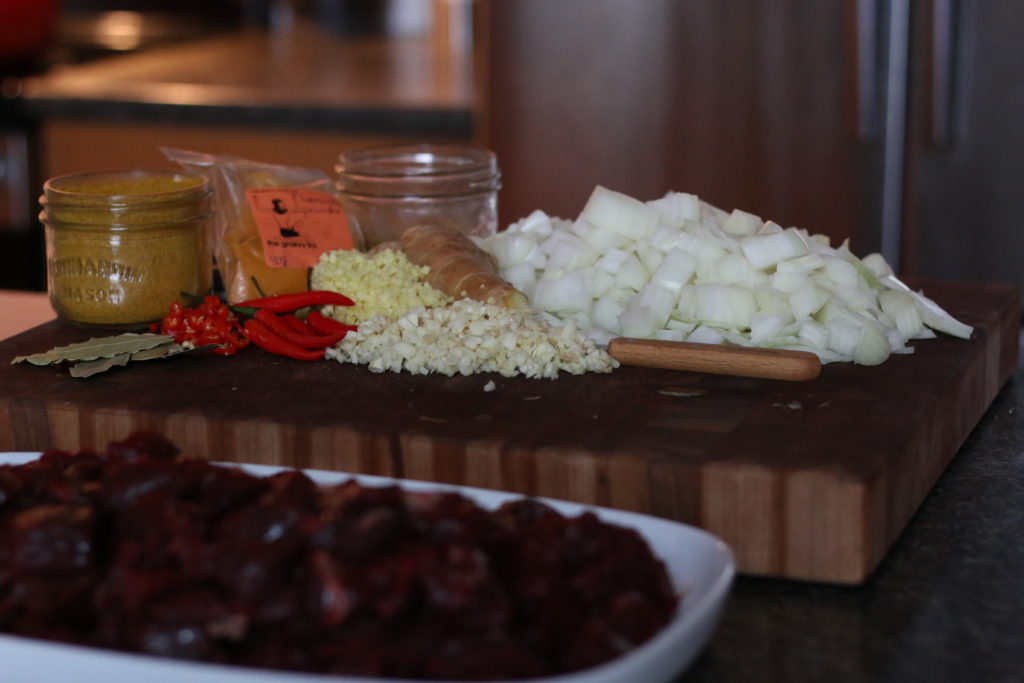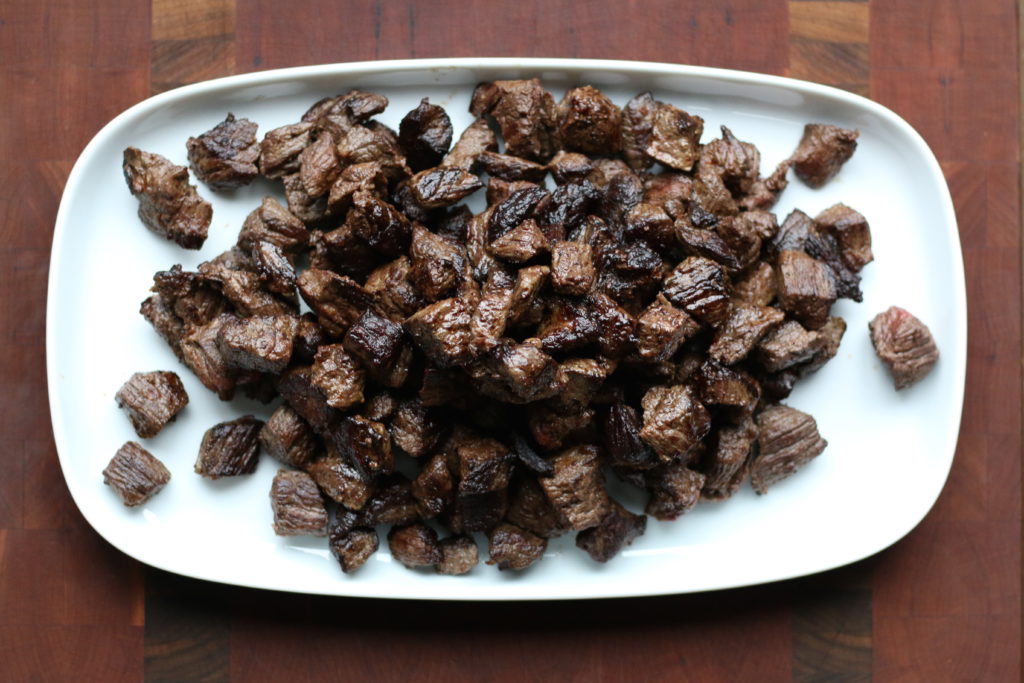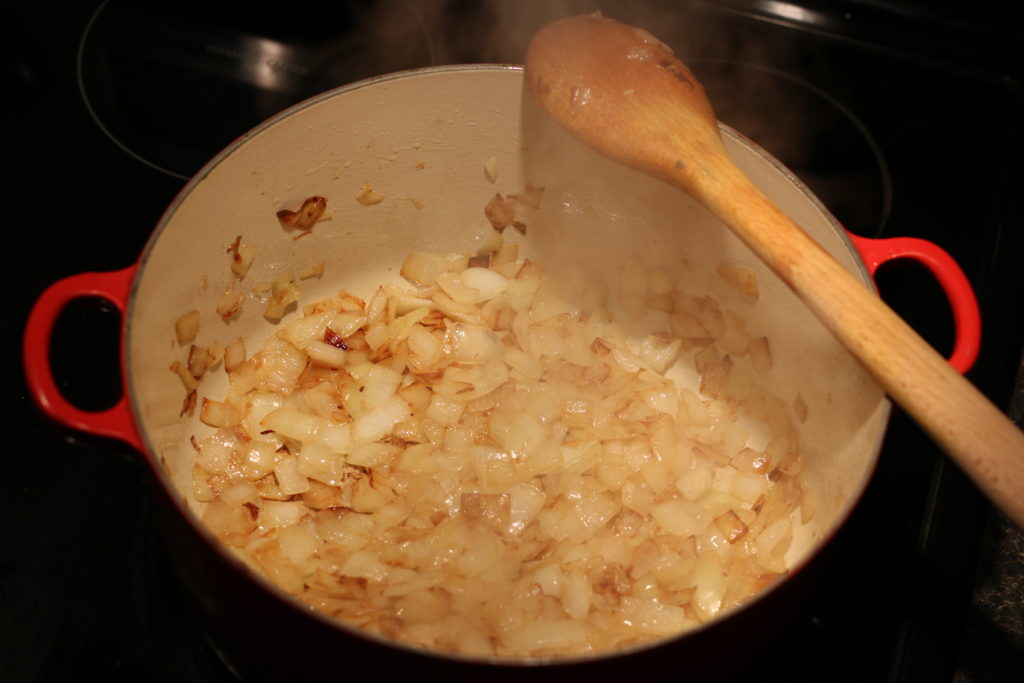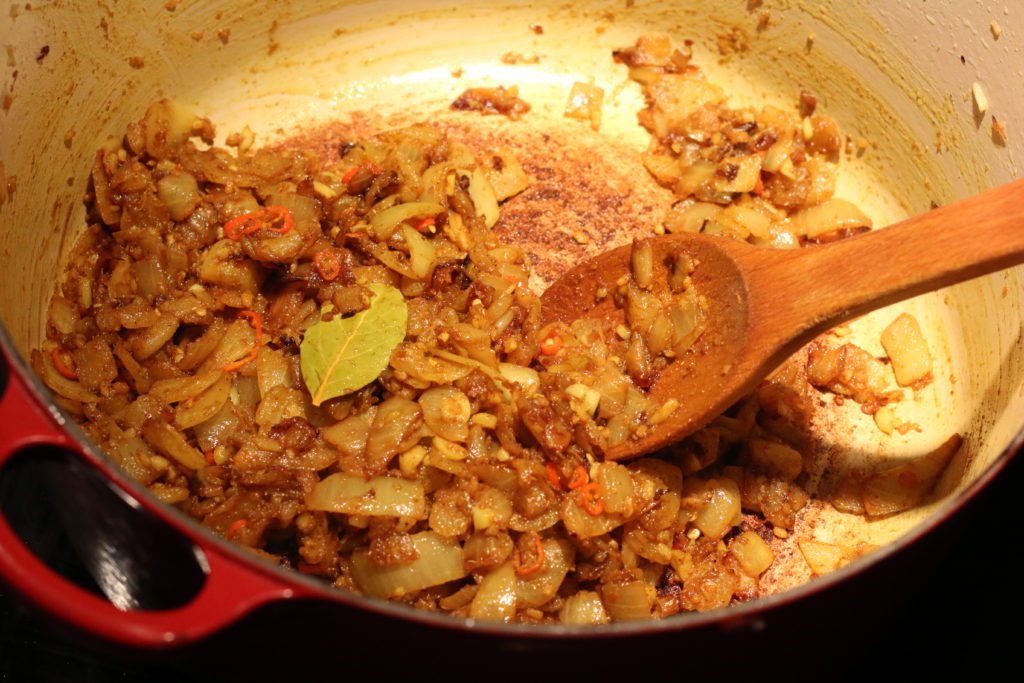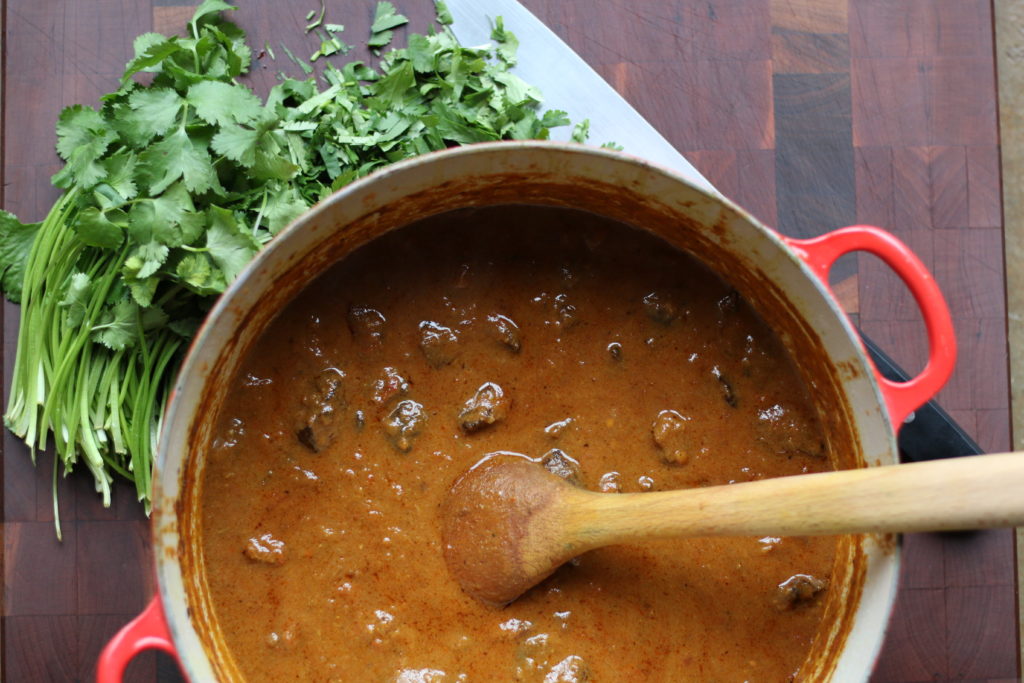When JOMH editor Adam Janke contacted me about submitting a recipe for the Forage section of the February issue a variety of wild game recipes came to mind. Pheasant saltimbocca, venison steak with chimichurri sauce, and chorizo stuffed rotisserie rabbit were a few that immediately seemed applicable. But none of these dishes seemed fitting for a publication dedicated to mountain hunting.
As Adam and I talked through the options, it became obvious what recipe I should submit: Bear Curry!
Why bear curry? I first discovered bear meat last spring after connecting on a boar up a remote inlet along the coast of British Columbia. I’d never tried bear and although the meat didn’t live up to the pork comparisons I’d heard countless times I found it to be great eating meat nonetheless.
Like any dedicated mountain hunter, I am constantly refining the things I pack into the mountains on a hunt. From packs to gear and tents to my weapon, it’s a constant process. Last summer during the scouting season I took a hard look at the type of food I was bringing into the mountains. From a dietary, calories per ounce, weight and edibility stand point I had a ton of opportunity to improve. By the end of the summer I had what I felt was a solid backcountry food program for long weekend trips or base camp on a fly-in extended backcountry hunt. A food program that I truly felt was making a difference in my energy, endurance and mindset every time I was in the mountains. The cornerstone of this food program was wild game stews and curries.
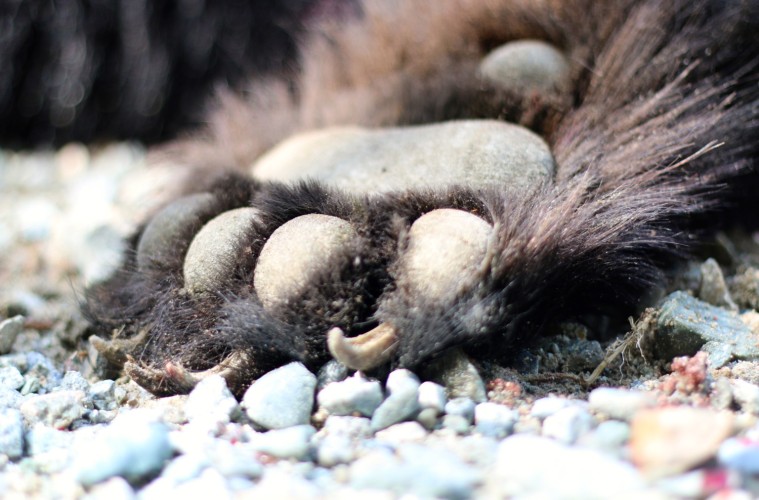
For summer scouting trips I was packing individual food-saver bags of frozen curries and stews along with some sort of carbohydrate like pre-cooked, packaged rice or a chunk of store bought polenta. Packing the stews in frozen would buy me a day with no refrigeration and as long as I found a cold spring, stream or river to store them in at camp I was eating these meals until the third and sometimes even the fourth day on a trip. As most mountain hunters know, one of the most important parts of a successful hunt is having a positive attitude and for me there is nothing that picks up my spirits more than a hearty home cooked meal.
The only downside to this type of backpacking food is the weight. The way I looked at it, the extra weight I was packing in was only making me stronger later in the hunt when it could make the difference between success and failure. For me, the benefit far outweighed the extra couple of pounds I was carrying.
Now this isn’t your standard, highly simplified “backcountry recipe”. As you’ll see in the recipe instructions below this is no “dice up one grouse breast and simmer in a can of Campbell’s mushroom soup” type of recipe. You will need to spend an hour over the stove and it’s going to need a couple more hours simmering away but I promise you, when you and your hunting partner are soaking wet, sitting in your tent on the side of a mountain while the sleet and wind pound your tent you are going to be very happy to dig into this meal and it will all be worthwhile!
Author’s note: There are no rules in cooking, if you can’t find the exact right ingredient or you don’t have the right pot, don’t stress, just use whatever you have available.
Ingredients:
| 1” Diced bear meat | 3.5lbs |
| Vegetable oil | As needed |
| Onions | 2 medium |
| Garlic cloves | 6 |
| Ginger | One 4 inch piece |
| Thai bird chilies | 2 (Based on personal preference) |
| Bay leaves, dry | 2 |
| Curry powder | 2 Tablespoons |
| Cumin powder | 1 Tablespoon |
| Turmeric powder | 2 Tablespoons |
| Low sodium chicken stock | 2 Litres |
| Diced tomatoes | 1 Can (400ml) |
| Sour cream | ¼ Cup *don’t buy the light version |
| Salt | 2 Tablespoons *Personal preference. I like salt and use 2 tablespoons |
| Water | As needed |
Prep and Cooking Instructions:
- Peel and chop the onions into a medium sized rough dice. Peel and chop the garlic and ginger into a small rough chop. Chop the chilies finely. See the picture below for size reference.
- In a large heavy bottom pot, heat up a couple tablespoons of vegetable oil over medium heat until the oil spits and pops when you put a piece of meat in.
- Once the oil is hot, scatter a single layer of diced bear meat over the bottom of the pot and allow it cook undisturbed for 2-3 minutes or until the meat is brown on one side. See the picture below showing how much meat goes in the pot at one time and the amount of browning you want on the meat.
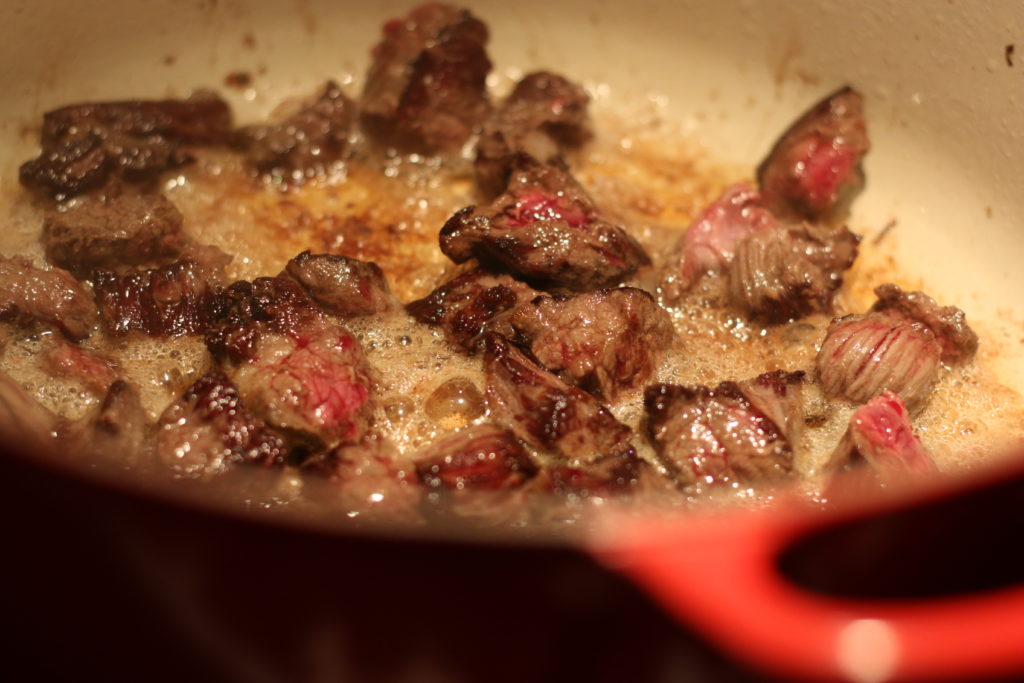
- Flip the meat over and brown the other side. Adjust the heat if necessary so that the meat is slowly browning and not burning.
- Take the meat out of the pot and repeat the browning steps with the rest of the meat in batches.
- When you remove the meat place it into a strainer so that the excess oil has a chance to fall off.
- Wipe the excess oil out of the pot with a paper towel or if the pot is burnt on the bottom wash the pot
- Place a couple more tablespoons of fresh vegetable oil into your clean pot and put it back on medium heat.
- When the oil is hot again, put your chopped onions into the pot and cook while stirring them until the edges start to brown. About 5-10 minutes depending on the heat. See the picture below for what to look for.
- Add in your chopped ginger, garlic, bay leaves and chilies and cook while stirring for 2 minutes.
- Add in the spices and stir for 30 seconds.
- Add the chicken stock and the bear meat to the pot, turn the heat to high and bring it to a simmer. Take a minute to scape any brown bits off the bottom of the pot so these don’t burn as the curry cooks.
- Simmer the curry for 2½ – 3 hours or until the meat is tender when you eat it. If the meat becomes exposed as the sauce reduces, add some water to keep the meat covered the entire time
- Once the meat is tender, add in the can of diced tomatoes and simmer for another 20 minutes.
- Turn off the heat and mix in the salt and the sour cream until it dissolves.
- Taste the curry and adjust the salt and spices to your taste. The final result will look like the picture below.
- Put the curry into the fridge and cool it down as quickly as possible.
- Once it’s cool, divide it up into 1 or 2 man servings and food-saver the portions.
- Freeze the curry. I keep the packages as flat as possible when I freeze them. That way when I pack them frozen into my backpack they stack neatly and keep each other frozen longer.
- To re-heat the curry, place it into a pot and add a touch of water. Simmer the curry for 2-4 minutes or until its hot. Add water as needed to keep it saucy when simmering.
- Enjoy!
* Bear meat may contain Trichinosis. Fully cook all your bear meat before eating it.
About the Author:
Connor was born and raised in Vancouver, B.C. and currently works there as a Product Development chef. As a teenager working at a boat rental business he spent summer days fishing for salmon in Howe Sound and sailing the Gulf Islands. It wasn’t until he moved to Kamloops in his early 20’s that he began to hunt under the tutelage of his friends Karl and Carey. Connor is most passionate about backpack camping and hunting adventures in the mountains and will often have his boss’ chocolate lab Kingston with him for summer scouting trips. You can read more about Connor’s adventures and find more recipes at www.cedarandsagebrush.com.


